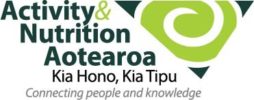22 Aug West Auckland community ready to take action on unhealthy food
A west Auckland community is tired of seeing its children being targeted by fast-food marketing and suffering the effects of a poor diet and is gearing up to make its food environment healthier.
The University of Auckland and Healthy Families Waitākere partnered to facilitate four workshops with residents and community leaders from a West Auckland community. Participants identified barriers to children eating the Ministry of Health’s recommended fruit and vegetable daily intake of 5+ A Day and came up with some actions.
The key barriers were:
– The high density of fast food outlets
– The high volume of fast food advertising and promotion
– The high cost of fresh produce in comparison to fast food
– Parents having little time for food preparation
– Declining cooking skills and knowledge among parents/caregivers
A study based on the workshops is published in the scientific journal PLOS ONE.
Co-author and Healthy Families Waitākere systems innovator, Michele Eickstaedt, says participants identified two barriers that were outside of their control: the toll of low-income work on health, and the density of fast food outlets with pervasive advertising and signage in their neighbourhoods.
“Parents said they work multiple low-wage jobs and are bound by inflexible hours. This leaves them with little time to cook meals, leading to a lack of cooking skills and knowledge within the household, which inevitably leads to poor health outcomes and increased rates of preventable chronic disease.”
Participants also said that families with low household budgets are more likely to prioritise satiety – feeling full – over nutrition.
“School principals are telling us students are walking in the front gates with breakfasts of $5 fried chicken and chip combo’s, purchased from fast-food outlets just outside school gates. A meal like this provides satiety, but leaves their brains ill-equipped for their day in the classroom.”
One study participant remarked, “How do you change what is sold right outside the school? I have a lot of respect for the shop owners – we all grew up knowing them – but what they’re selling is not good for our kids.”
The number of children eating enough fruit and vegetables is in steady decline across Aotearoa. For the past three years, the New Zealand Health Survey has found half of the children aged 2–14 years (50 per cent) do not eat enough vegetables (two serves a day for pre-schoolers, three serves for 5-14 year-olds). Fruit and vegetable intake is lower in the Auckland region, where only 42 per cent of children meet the recommended ‘5+ A Day’, and even lower among non-European children and children living in areas of high deprivation.
Study lead Dr Sarah Gerritsen, a research fellow from the University of Auckland’s School of Population Health, says: “Earlier research conducted here found that, on average, eating a healthy diet is more expensive than an unhealthy diet, particularly when takeaways are included. And while it is possible to eat a healthy diet for the same price, this requires more time and cooking skills.”
The rise of Uber Eats has increased the availability of fast food. One participant said, “My teenage son gets Uber Eats delivered to his bedroom window – how can I compete with that?”
Another said: “When I open the [Uber] app in this neighbourhood there are 117 places that can deliver me food in 20 minutes and none of them are a healthy choice.”
Dr Gerritsen backs the participants’ call for government regulation of the fast-food sector to address advertising standards and outlet density. “Communities cannot tackle these systemic issues on their own – they can’t limit advertising or prevent more fast food outlets from opening in their neighbourhoods,” she says.
“The community told us they would like to see the Fruit in Schools programme expanded to more schools (the programme is currently only available to decile 1 and 2 primary and intermediate schools) and to high schools, where students are even more susceptible to the junk food outside the school gate.
“Schools could be supported by a standardised healthy food policy, which could be tailored to suit their needs and strengths. Advertising of fast food needs stronger regulation, and the concentration of fast food and convenience stores, particularly around schools, must be addressed.”
Through ongoing workshops, residents have outlined a number of ideas to strengthen the local food system at a community level.
Study participants included high school students, people who worked in health promotion, local food retailers, kaumātua and parents. The study was part of a larger Health Research Council-funded project to explore barriers and solutions to children’s fruit and vegetable intake.
PLOS ONE: Improving low fruit and vegetable intake in children: findings from a system dynamics, community group model building study.
For more information and interview opportunities, please contact:
Grace Vujnovich, Healthy Families Waitākere | [email protected] | 021 737 090
Dr Sarah Gerritsen | [email protected] | 022 050 1700

About Healthy Families NZ
Healthy Families NZ is a Ministry of Health-funded prevention initiative, operating in ten locations across Aotearoa to support change for better health and wellbeing outcomes in places where we live, learn, work and play. Each location works to strengthen the prevention system through harnessing the power of locally-led collaboration and co-design. System innovators work alongside local leaders to identify, ideate and implement systems change to support people to make healthier choices in places where we spend our time, including; schools, workplaces, places of worship, marae, community spaces and more. Each location has chosen its own priorities for improving health and wellbeing based on the unique needs and strengths of the community it serves.
Within the Healthy Families NZ workforce is the Kāhui Māori, a collective with an explicit focus on improving equity and health outcomes for Māori, using frameworks that sit within a Māori world view, te ao Māori.
1. Te reo Māori (Māori language)
2. Tikanga Māori (protocols and customs)
3. Te Tiriti o Waitangi (the Treaty of Waitangi)
By taking a systems approach to reducing risk factors of preventable chronic disease, the approach aims to improve health outcomes and increase health equity through key focus areas; improved nutrition, physical activity and mental health, smoke-free and reduced alcohol-related harm. The 10 Healthy Families NZ communities come from areas with higher-than-average rates of preventable chronic diseases (such as diabetes), higher-than-average rates of risk factors for these diseases (such as smoking), and/or high levels of deprivation.
Media release, 22 August 2019

